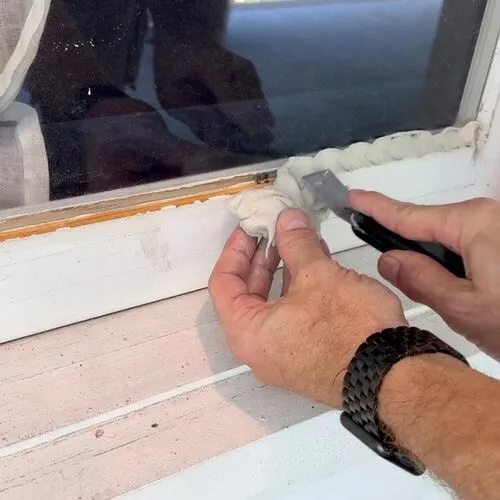Storefront Glazing: Enhancing Aesthetics and Functionality
Storefront glazing is a critical aspect of commercial architecture, playing an important role in how businesses provide themselves to the public. It combines both kind and function, supplying aesthetic appeal while also ensuring energy performance and presence. This article explores the various types of storefront glazing, their advantages, factors to consider, and best practices for installation.
Comprehending Storefront Glazing
Storefront glazing refers to the glass parts of a structure's exterior, specifically in commercial settings. It encompasses windows, glass doors, and often glass walls that make up the entryway or display screen areas of retail and other public-facing businesses. The option of glazing products can significantly affect not only the look of a storefront however likewise its overall efficiency.

Types of Storefront Glazing
Single Glazing:
- Consists of one layer of glass.
- Usually less energy-efficient.
- Frequently utilized in older structures.
Double Glazing:
- Features two layers of glass with an insulating space in between.
- Uses better thermal insulation and soundproofing.
- Typically utilized in modern-day shops.
Triple Glazing:
- Incorporates three layers of glass.
- Supplies maximum insulation and energy effectiveness.
- Best suited for very cold environments.
Low-E Glass:
- Coated with a special movie that shows UV rays and reduces heat loss.
- Helps keep comfy indoor temperatures.
- Suitable for energy-conscious services.
Tempered Glass:
- Heat-treated to be stronger than basic glass.
- Shatters into small, more secure pieces when broken.
- Often used in high-traffic areas for included security.
Laminated Glass:
- Composed of 2 or more layers of glass bonded by an interlayer.
- Provides sound insulation and boosted security.
- Can be beneficial in areas prone to vandalism.
Advantages of Storefront Glazing
Storefront glazing deals many advantages to companies and building owners, consisting of:
Aesthetic Appeal: A well-designed storefront enhances the visual appeal of a service, drawing in clients and improving brand image.
Natural Light: High-quality glazing can maximize natural light, creating an enjoyable atmosphere inside the shop.
Energy Efficiency: Advanced glazing products can considerably reduce energy usage, causing cost savings on heating & cooling.
Safety and Security: Using strong and laminated glass can help safeguard against break-ins and mishaps.
Marketing Opportunities: Glazed stores offer excellent exposure for products and promotions, enhancing marketing efforts.
| Advantage | Description |
|---|---|
| Aesthetic Appeal | Enhances visual beauty of a company. |
| Natural Light | Makes the most of daylight within interiors. |
| Energy Efficiency | Lowers energy expenses through improved insulation. |
| Safety and Security | Protects against invasions and mishaps. |
| Marketing Opportunities | Boosts product visibility and draws consumers in. |
Considerations for Choosing Storefront Glazing
When picking the proper glazing for a storefront, several aspects need to be thought about:
Location: The geographical area and environment dictate the type of glazing needed for optimum efficiency.
Structure Design: The architectural design and materials utilized in the structure might affect the choice of glazing.
Regulatory Standards: Local structure codes might have particular requirements regarding security and energy efficiency.
Budget: High-performance glazing options can be more expensive, but typically lead to long-term cost savings.
Functionality: Consider the main purpose of the storefront: Is it mainly for display or does it also require to offer privacy and protection?
Best Practices for Installation
Correct installation is vital to maximizing the performance and durability of storefront glazing. Here are some best practices:
Hire Experienced Professionals: Always deal with certified glazing contractors who understand the subtleties of commercial setups.
Ensure Proper Sealing: Well-sealed joints avoid air and water leaks, improving energy performance.
Usage Quality Materials: Opt for high-quality glass and framing materials that withstand ecological elements.
Routine Maintenance: Implement a maintenance schedule to clean and examine the glazing, guaranteeing its longevity and performance.
Regularly Asked Questions (FAQs)
Q1: What is the difference between double and triple glazing?
A1: Double glazing includes 2 layers of glass, while triple glazing includes three layers. Triple glazing provides better thermal insulation, making it more energy-efficient.
Q2: How does low-E glass work?
A2: Low-E glass has an unique coating that shows heat and blocks UV rays, assisting to control indoor temperatures and safeguard furnishings from sun damage.
Q3: Is tempered glass essential for all shops?
A3: While not compulsory for all storefronts, tempered glass is suggested for locations where security is vital, such as entrances or high-traffic locations.
Q4: Can storefront glazing impact repair my windows And Doors energy expenses?
A4: Yes, the best glazing can considerably lower cooling and heating costs through better insulation and energy efficiency.
Q5: How frequently should storefront glazing be kept?

A5: Regular maintenance ought to be set up at least once a year, however cleaning and inspections must be conducted more frequently in high-traffic areas.
Storefront glazing is an essential function of modern commercial architecture that combines aesthetic appeal and practical performance. By understanding the types of glazing available, their benefits, and key considerations for selection and installation, organizations can make informed decisions that enhance their exposure, security, and total performance. In a market driven by very first impressions, a well-designed storefront can make all the distinction in drawing in customers and sticking out in a competitive market.
